Early September brought much-needed precipitation across Kansas, with regions of the state accumulating up to 5 inches more than normal, while isolated areas of eastern Kansas received below-average rainfall amounts (Figure 1). These events, for the majority of the state, improved soil moisture conditions at least temporarily, which is positive for wheat planting. While early September added decent precipitation totals, the last two weeks were predominantly drier. Recent warm and breezy conditions can rapidly reduce soil moisture in both the first (September) and second (October) sunniest months in the state. Over the last week, soil moisture has slightly decreased, with negative changes observed at the 4-inch (10-cm) depth (Figure 2).
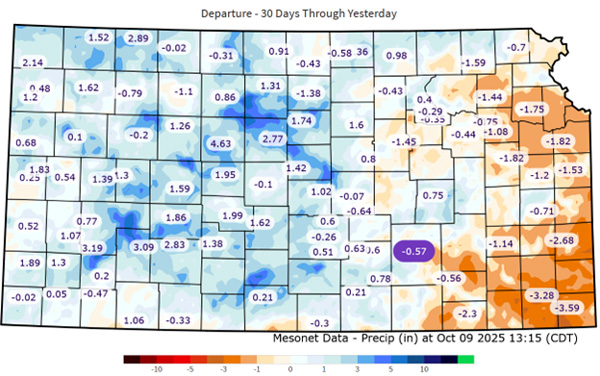
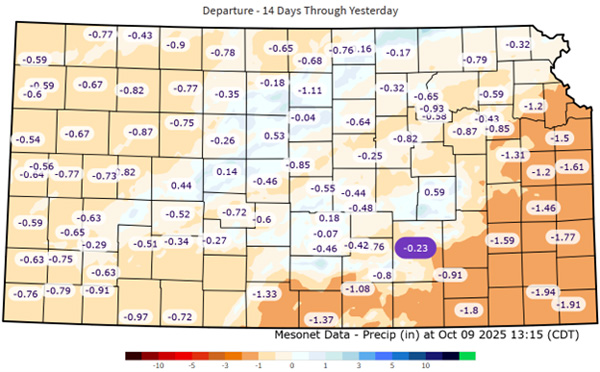
Figure 1. Departure from normal precipitation over the last thirty days (upper panel) and fourteen days (lower panel) ending on 8 October 2025. Map by the Kansas Mesonet.
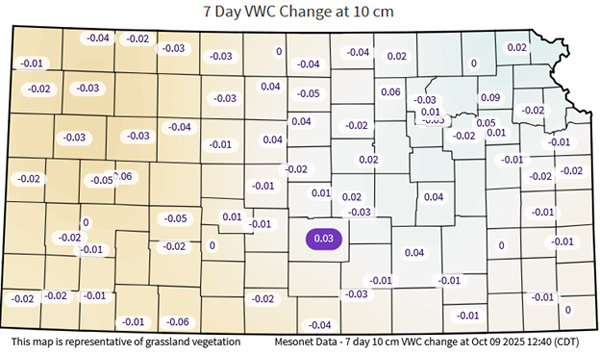
Figure 2. Change in volumetric water content at the 4-inch soil depth (10 cm) over the last seven days, as of October 9, 2025. Map by the Kansas Mesonet.
Weather forecast
Kansas's next 7-day precipitation forecast indicates that the region may experience below-average moisture, with only small areas of limited moisture (Figure 3). Totals are only expected to be generally less than 0.50 inches, with many not observing moisture. Average weekly precipitation ranges from 0.3 inches in the west to 0.9 inches in the southeast. The 8- to 14-day forecast slightly favors an increased probability of above-normal precipitation statewide, with the highest probability in the northwest part of the state (Figure 4).
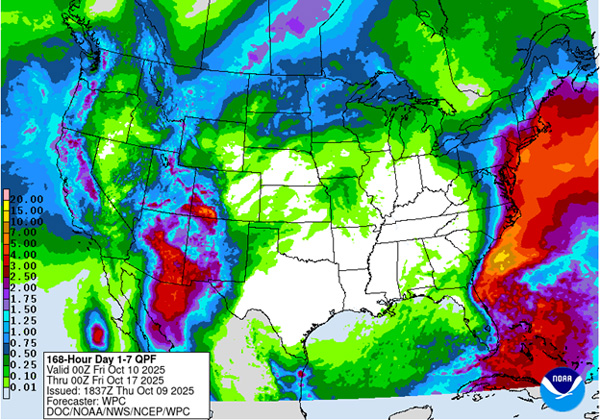
Figure 3. Weekly precipitation forecast as of October 9, 2025, by the National Weather Service Weather Prediction Center (NOAA). For the next seven days, forecasted precipitation amounts in Kansas range from <0.1 to ~0.75 inches, with locally higher amounts possible.
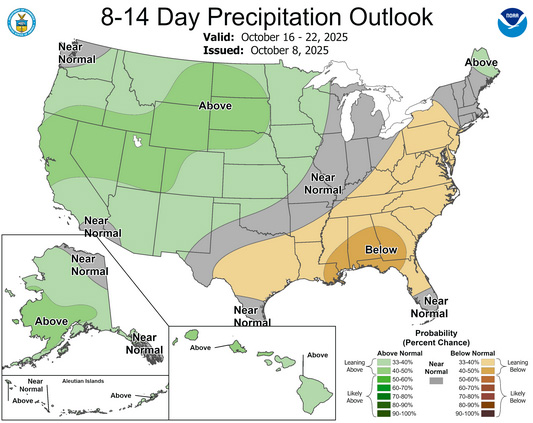
Figure 4. The 8- to 14-day precipitation forecast as of October 9, 2025, by the Climate Prediction Center, NOAA.
Continue planting progress to ensure crop establishment at the optimum time
For the majority of the state, planting conditions are suitable for growers to continue planting and ensure the crop is established at the optimal time. The only exception is northwest Kansas, where the optimum planting dates for wheat are in late September. At this time, growers are encouraged to adjust their agronomic practices if planting wheat late.
Some growers in southwest Kansas, where some of the precipitation was missed and soils are dry, may be considering whether to continue planting the crop or wait for rain. There is no one-answer-fits-all solution here, since each grower must consider their own situation before making this decision. At this point in time (October 9), and based on current soil conditions and weather forecasts, the advice would be to continue with crop planting since we are at the beginning of the optimum planting window for most of the state, and there are positive rain chances for most of the state in the 14-day outlook. Continuing to plant now allows for taking advantage of the available moisture where recent rainfall has occurred, and also ensures good seed distribution in drier soils where rainfall has not occurred. In this situation, growers also have the opportunity to plant a large number of acres before it rains. If the short-term forecast changes and more widespread precipitation materializes, this should allow for uniform crop emergence in those regions (especially since the regions where this forecast exists received moisture recently). However, suppose no rain occurs in the near future. In that case, the crops planted now into dry soils in parts of southwest Kansas might not emerge until it rains later in the fall or even winter, delaying the “effective planting date” to whenever the rain occurs. Thus, at this point, growers should start to treat these fields as if they were sowing late, where increases in seeding rate and applications of in-furrow starter fertilizer are recommended. These situations may also be ideal for seed treatments, as the seeds will be exposed to weather in the fields for several days.
The worst-case scenario would include planting into a limited amount of moisture, just enough for the emergence of some plants, but not enough to maintain these seedlings after they emerge. This situation can result in uneven stands and high stand variability within the field (Figure 5), or even crop failure. Thus, if good moisture cannot be reached in about the top 1.5 to 2 inches of soil, growers would likely be better off sowing it shallower and waiting for rain.
From a regional perspective, we are either in the beginning (south central, central, southeast Kansas) or at the peak (north central, southwest) of the optimum planting window, with the exception of northwest Kansas, where we are already past the optimum planting window for wheat. Since we are planting at the optimum window and predominantly with soil moisture, for the majority of the state, there is no need to adjust our practices to compensate for a late emergence other than in northwest Kansas.
For more information on planting wheat into dry soils, please see this previous eUpdate article at https://eupdate.agronomy.ksu.edu/article_new/considerations-when-planting-wheat-into-dry-soil-564-1.
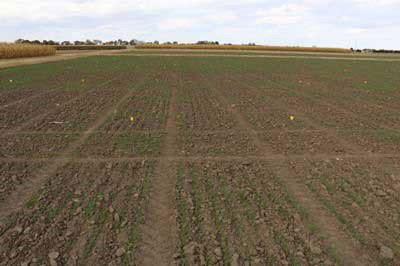
Figure 5. Uneven wheat stands as a result of sowing into dry soils. Photo by Romulo Lollato, K-State Research and Extension.
Romulo Lollato, Wheat and Forages Specialist
lollato@ksu.edu
Christopher “Chip” Redmond, Kansas Mesonet Manager
christopherredmond@ksu.edu
Tags: wheat weather soil moisture planting